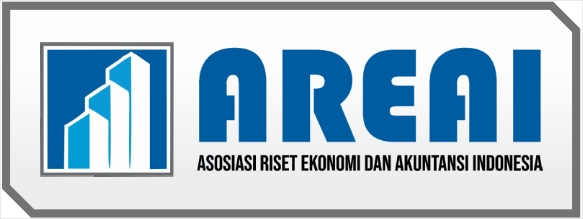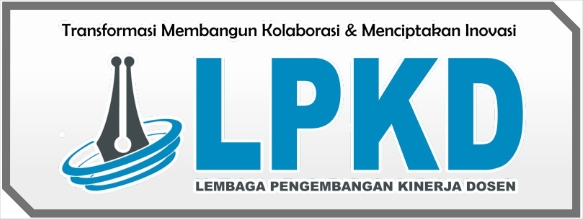The Importance Of Company Age As A Moderation To Solve Financial Distress Problems: Case Study Of The Manufacturing Industry In Indonesia
DOI:
https://doi.org/10.55606/bijmt.v3i3.2427Keywords:
Operating Capacity, Leverage, Financial Distress, Company AgeAbstract
Study This aim For test influence operating capacity and leverage against financial distress with age company as moderating variable in Registered Manufacturing Companies on the Indonesian Stock Exchange for the 2018-2022 period. Research methods This is method quantitative. Population in study This is company manufacturers listed on the Indonesian Stock Exchange for the 2018-2022 period. Research methods sample done with use purposive sampling method, based on criteria that have been determined there were 132 companies used as sample. The analytical method used is method analysis multiple linear regression and processed use tool help SPSS Version 25. Test result show that: (1) Operating Capacity influential to Financial Distress, (2) Leverage influential significant to Financial Distress, (3) Company Age No moderate influence Operating Capacity to Financial Distress, (4) Company Age moderates strengthen influence Leverage to Financial Distress.
References
Akhmadrandy Ibrahim. (2016). Analysis of Quality Management Implementation from Operational Performance in Extractive Industries in North Sulawesi (Comparative Study on Agriculture, Fisheries and Livestock). 4 (2), 859–869.
Ananda, G.C. (2019). The Influence of Job Performance Assessment on Employee Promotion at Panca Budi College in Medan. Journal of Civil Service, 12 (1), 102–113. https://jurnal.pancabudi.ac.id/index.php/abdiilmu/article/view/534
Atika, Darminto, and SGH (2018). The Influence of Several Financial Ratios on Financial Distress Prediction.
Atika, GA, Jumaidi, & Kholis, A. (2020). The Influence of Liquidity and Company Size on Financial Distress. Journal of the Faculty of Economics, Medan State University, 976 - 623 - 94335 - 0 – 5, 86–101. http://repository.unsada.ac.id/cgi/oai2
Ayu, AS, Handayani, SR, & Topowijono, T. (2017). The Influence of Liquidity, Leverage, Profitability, and Company Size on Financial Distress. Study of Manufacturing Companies in the Basic Industry and Chemical Sectors Listed on the Indonesian Stock Exchange in 2012-2015. Journal of Business Administration, 43 (1), 138–147.
Brigham, E.F. and J.F.H. (2019). Basics of Financial Management (14th Edition). Salemba Four.
Curry, Khirstina, E. B. (2018). Financial Distress in Go Public Sector Companies in Indonesia.
Deni Sunaryo, Etty Puji Lestari, Siti Puryandani, & Hersugondo, H. (2022). CAN COMPANY SIZE AND FINANCIAL DISTRESS MODERATE IN SOLVE STOCK RETURNS IN RETAIL SECTOR COMPANIES. Proceeding of The International Conference on Economics and Business, 1(2), 291–309. https://doi.org/10.55606/iceb.v1i2.133
Dewi, AS, Arianto, F., Rahim, R., & Winanda, J. (2022). The Influence of Cash Flow, Profitability and Leverage on Financial Distress During the Pandemic in Manufacturing Companies Registered on the IDX. Owner, 6 (3), 2814–2825.
Eka, RP, & Wulandari, CP (2020). Financial Distress as an Impact of Operating Capacity, Sales Growth and Liquidity Ratios in the Consumer Goods Industry Sector in Indonesia 2016-2018. Proceedings of Senantias 2020, 1 (1), 607–614.
Fabiana Meijon Fadul. (2019). Setyowati. 4 (2), 618–624.
Fahrani, M., Nurlaela, S., & Chomsatu, Y. (2018). The Influence of Concentrated Ownership, Company Size, Leverage, Capital Intensity and Inventory Intensity on Tax Aggressiveness. Journal of Paradigm Economics.
Ghozali. (2018a). Multivariate Analysis Application with the IBM SPSS 25 Program. Diponegoro University Publishing Agency.
Ghozali, I. (2018b). Multivariate Analysis Applications with the IBM SPSS 25 Program (9th ed.). Diponegoro University.
Hanifa Ramadhany, ES (2021). The Influence of Company Size, Company Age, Profit and Cash Flow on Conditions. 3 (3), 640–652.
Hernadianto, Yusmaniarti, F. (2020). Analysis of Financial Distress in Property and Real Estate Subsector Services Companies Listed on the Indonesian Stock Exchange. JSMBI (Indonesian Journal of Management Science and Business).
Hidayat, A, A. (2019). Nursing Research Methods and Data Analysis Techniques. Salemba Medika.
Wisdom, J. (2017). Research Process, Problems, Variables and Research Paradigm Nikmatur Ridha. 14 (1), 62–70.
Hutauruk, MR, Mansyur, M., Rinaldi, M., & Situru, YR (2021). Financial Distress in Companies Listed on the Indonesian Stock Exchange. JPS (Journal of Islamic Banking), 2 (2), 237–246.
Jensen, M. And Meckling, W. (1976). Theory of the firm: Managerial Behavior Agency Cost, and Ownership Structure. Journal f Finance Economics 3, Pp. 305-360.
Cashmere. (2012). Financial Report Analysis. PT Raja Grafindo Persada.
Cashmere. (2017). Financial Report Analysis. PT Raja Grafindo Persada.
Cashmere. (2019). Financial Report Analysis. PT Raja Grafindo Persada.
Kurniasanti, A., & Musdholifah, M. (2018). The Influence of Corporate Governance, Financial Ratios, Company Size and Macroeconomics on Financial Distress (Study of Mining Sector Companies Listed on the Indonesian Stock Exchange 2012-2016). Journal of Management Science, 6 (3), 1–16.
Livia Ramadhani, A., & Khairunnisa, SM (2019). The Influence of Operating Capacity, Sales Growth and Operating Cash Flow on Financial Distress (Empirical Study of Agricultural Sector Companies Listed on the Indonesian Stock Exchange for the 2013-2017 Period). Jrka, 5, 75–82.
Made, N., & Septiani, I. (2019). Institutional Against Financial Distress at the Faculty of Economics and Business, Udayana University (Unud), Bali, Indonesia. Economic conditions that are always changing have influenced the activities and performance of companies, both small companies and companies. 8 (5), 3110–3137.
Mahajan, P., and Singh, F. (2018). How Do Pre-Slowdown Financial Characteristics Impact the Firms' Relative Financial Performance During Economic Recession? An Empirical Investigation. Asia-Pacific Journal of Management Research and Innovation, 9(4), 369-378.
Maronrong, R., Suriawinata, IS, & Septiliana, S. (2022). The Influence of Profitability, Leverage, Operating Capacity and Corporate Governance on Financial Distress of Retail Companies on the IDX 2011-2017. Journal of Accounting and Management, 19 (02), 91–103.
Owusu-Ansah, S. (2000). Timeliness of Corporate Reporting in Emerging Capital Markets: Empirical Evidence from Zimbabwe Stock Exchange. Accounting and Business Research.
PLatt, H.D., and MBP (2002). predicting corporate financial distress. Journal of Economics and finance.
Pulungan, KPA, Lie, D., Jubi, & Astuti. (2017). The Influence of Liquidity and Leverage on FD in Ceramics, Porcelain and Glass Sub-Sector Companies Listed on the IDX. Financial Journal, 3 (2), 1–9.
Rahma, A. (2022). The influence of profitability, leverage and liquidity on financial distress. Fair Value: Scientific Journal of Accounting and Finance, 4 (9), 4013–4019.
Rodoni, A. & A.H. (2013). Financial management. Media Discourse Partners.
Rohana Sawiya, AM (2015). No TitleÉ?. Altman Z-Score Analysis to Predict Bankruptcy in Pharmaceutical Companies in Indonesia (Period 2008 to 2015), 13 (3), 1576–1580.
Rudianto. (2013). Management Accounting. Erlangga.
Safitri, M., Nur, R., & Fadhilah, HK (2022). The Influence of Operating Capacity, Profit and Cash Flow on Financial Distress in the Transportation Sector Listed on the Indonesian Stock Exchange (BEI) for the 2016-2020 Period. 01(02), 1–21.
Shubhan, H. (2015). Bankruptcy Law. Kencana.
Simanjuntak, C., Tiytik, F., & Aminah, W. (2017). The Influence of Financial Ratios on Financial Distress (Study of Transportation Companies Listed on the Indonesian Stock Exchange for the 2011-2015 Period). E-Proceedings of Management, 4 (2), 1580–1587.
Sjahrial, D. (2014). Advanced Financial Management. Revised Edition. Media Discourse Partners.
Sugiyono. (2019). Quantitative, Qualitative, and R&D Research Methods. Alphabet.
Suleha, & Mayangsari, S. (2022). The Influence of Operating Capacity, Profitability, Capital Structure and Firm Size on Financial Distress in Mining Sector Companies Listed on the IDX for the 2018-2020 Period. Trisakti Economic Journal, 2 (2), 343–356.
Sunaryo, D., EP Lestari, S Puryandani (2023). Testing The Effect Of Debt To Equity Ratio And Dividend Payout Ratio On Stock Return In The Food Industry And Beverages. Jurnal Manajemen, 3 (2), 40-60
Sunaryo, D. . (2022). WHAT IS SHARE PRICES CAN AFFECT RETURN ON ASSETS, TOTAL ASSET TURNOVER, AND CURRENT RATIO WITH FINANCIAL DISTRESS AND EARNINGS PER SHARE AS A MODERATING VARIABLE. International Journal of Economy, Education and Entrepreneurship, 2(2), 422–437. https://doi.org/10.53067/ije3.v2i2.82
Sunaryo,D. & Lestari,E.(2023).Effect of Cash, Receivables, and Inventory Turnover on Net Profit Margin (NPM) in Food & Beverage Subsector Manufacturing Companies. Studies in Business and Economics,18(1) 298-313. https://doi.org/10.2478/sbe-2023-0016
Wibowo, A., & Susetyo, A. (2020). Analysis of the Influence of Profitability, Liquidity, Operating Capacity, Sales Growth on Financial Distress Conditions in Manufacturing Companies Listed on the Indonesian Stock Exchange 2015-2018. Student Scientific Journal of Management, Business and Accounting (JIMMBA), 2 (6), 927–947.















